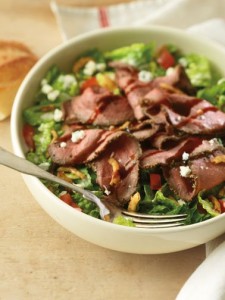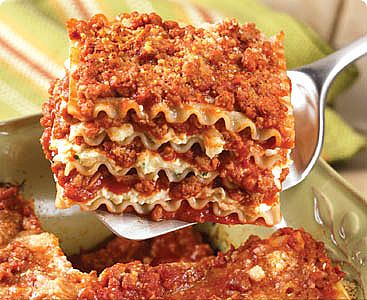Diet: Weight Loss and Metabolism
The last time it happened, it was the girl who cuts my hair. "So, what kind of diet are you on?" she asked. Since I'm a nutritional biochemist, it's a question I'm used to. My instinct was to skip the scientific details, spit out a four-word answer, and hope she'd move on to the neck shaving. The problem: My diet doesn't fit any of the usual descriptions. It's not low-carb, low-fat, or high-protein. I'm not a vegetarian, and I haven't sworn off sugar. The truth is, I eat almost everything. And that's what makes it so effective.
There are plenty of experts who claim that all that matters is the number of calories you eat: If you want to lose weight, eat fewer calories than you burn. This may make sense on paper, but your body is far more complex than that. You see, it's not just how much you eat; it's what you eat—and when you eat it.
Case in point: carbohydrates. The fast-digesting kind—breads, pasta, rice, potatoes, baked goods, and candy—raise blood sugar quickly. This signals your body to stop burning (and start storing) fat, and forces it to use the excess sugar for energy instead. In contrast, slow-digesting carbohydrates, such as fruits and vegetables, keep blood-sugar levels normal, which allows your body to continue to burn fat. So, even though a high-sugar cookie and a big bowl of fruit may have the same number of calories, they have very different effects on your ability to lose body fat.
But here's what's surprising: High-sugar carbohydrates aren't always bad. In fact, sometimes they're the smartest foods you can eat. The secret is timing. Here's when (and what) you should be eating to build a lean, muscular body—around the clock.
Lose weight around the clock with The 8-Hour Diet!
Time Zone 1: Right after You Wake
In a study of 2,831 people, researchers at Harvard University found that those who ate breakfast every day were 44 percent less likely to be overweight and 41 percent less likely to suffer from insulin resistance—a precursor to diabetes—than those who had no a.m. meal.
How to eat: Fill your plate with high-quality protein, slow-digesting carbohydrates, and healthy fats. The protein stops muscle breakdown and provides the raw materials for laying down new muscle; the carbohydrates replenish energy stores without elevating blood sugar; and healthy fats assure your body that there's more coming in, giving it the green light to burn stored fat.

Time Zone 2: Every 3 Hours after Breakfast
Waiting more than 4 or 5 hours between meals causes your blood sugar to bottom out, leaving you weak, irritable, and tired. (For the record, both high and low blood sugar can be problematic.) To combat this, your body secretes cortisol, a hormone that boosts blood-sugar levels back to normal. Trouble is, one of the ways it does this is by converting muscle protein to sugar, what exercise scientists call "muscle wasting," two words you never want to see paired together. The solution: frequent meals. Eating more often helps regulate blood-sugar levels, protecting your muscles from being broken down and used as energy. Here's
a bonus: South African researchers found that men who ate the most frequently consumed 27 percent fewer calories than those who ate the least often.
How to eat: As with breakfast, always include protein, along with either healthy fats or slow-digesting carbohydrates (preferably both). Protein is the major player here, since up to 30 percent of its calories are burned during digestion, compared with 8 percent of carbohydrates and 2 percent of fats. Keep in mind that the recommendations for this time zone may include snacks, lunch, and even dinner, depending on the time of day you exercise.

Time Zone 3: After Your Workout
Unlike before your workout, fast-digesting carbs are now more desirable than the slow-digesting type. That's because an intense workout changes your body's priorities: As sugar is absorbed into your blood-stream, it's preferentially shuttled to your muscles—instead of being used as fuel—and is stored there for later use. The kicker is that this forces your body to accelerate the rate at which it burns fat for energy.
How to eat: Combine high-quality protein with fast-digesting carbohydrates at two separate times:
1. Immediately after you finish exercising. Ideally, this should be a liquid meal, which speeds the absorption of protein and carbohydrates into your bloodstream. Researchers at the University of Texas Medical Branch found that 6 grams (g) of essential amino acids and 35 g carbohydrates are an ideal combination for promoting muscle growth after exercise. That's almost identical to 12 ounces of chocolate milk.
2. Two hours later. This time, opt for solid food. That is, consider this the best time to eat spaghetti and meatballs—guilt-free. Even better, combine fast- and slow-digesting carbs with protein by choosing a lean meat and a green vegetable to go along with pasta, rice, or a potato. Once you've eaten this meal, follow the guidelines in Time Zone 2 for the rest of the day.
One caveat: If you exercise first thing in the morning (before breakfast), have your postworkout drink prior to working out, follow the guidelines for eating 2 hours after exercise, and then resume the recommendations for the rest of the day (Time Zone 2). You can have 6-Pack Abs in 6 Weeks!

-
Diet Strategies: Weight Loss Food Cravings
Researchers define a craving as an intense desire to consume a particu
-
Belly Off! 2008: 13 More Dinners:
Almond-Crusted Chicken (makes 4 servings) 6 ounces slivered almonds
-
Abs Diet: Almonds and Your Diet
• Make plain peanut butter chunky by adding almond bits to
-
51 Foods You SHOULD Be Eating
We recently wrote a blog called the 10 Commandments of Fat Loss — and
-
Burn Fat Faster
Its proven that stronger people usually have less body fat—with minima
-
Weight Loss: Fat-Burning Carbs
Are you in the fat-burning zone? University of Florida scientists rece
- DON'T MISS
- Danger of Weight Loss Supplements
- Diet Str egies: Calories
- Diet Strategies: The Cookie Diet
- Why Dwayne “The Rock” Johnson Is Technically Obese
- Eating Out With Your Friends
- Weight Loss: Abs Diet Contest Winner at Menshealth.com
- 8 Ways to Tame a Raging Appetite
- Abs Diet: Frozen Dessert Recipe
- Arm Exercises: Side Press
- TRUTH About Protein!




